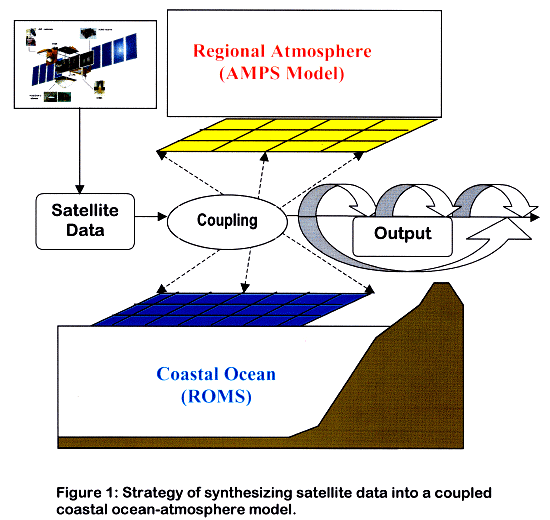
| |||||
|
|
|
|
|
|
|
|
|
|
|
|
|
|
|
|
Study Coastal Air-Sea Interactions Using a Coupled Regional Ocean-Atmosphere Model
Y. Tony Song (Jet Propulsion Laboratory, Caltech, Pasadena, CA 91109)
Abstract:
Recent JPL remote sensing instruments, such as the QuikSCAT scatterometer,
the TOPEX/Jason-1 altimeter, and the Terra MISR/ASTER, have made detailed
observations possible. The goal of this study is to develop a fully synchronous,
state-of-the-art coupled coastal ocean-atmosphere model to fully utilize
those satellite observations for better prediction and understanding of
the air-sea-land system.
We are developing a coupled regional ocean-atmosphere system (Figure 1) based on the
Regional Ocean Model System (ROMS), the parallel version of SCRUM originated from Song &
Haidvogel (1994), and the recently released Atmosphere Mesoscale Prediction System (AMPS,
the atmospheric components of COAMPStm) from NRL. These two models are compatible in
numerical design, physical dynamics, as well as similar regional application characteristics.
Several hypothesis-driven tests are used to evaluate the physical dynamics and numerical
performance, including the marine boundary-layer evolution, wind-driven upwelling, and
coastal terrain effect.
|
| PRIVACY | | IMAGE POLICY |
Webmaster: Xiaosu Xie
|


